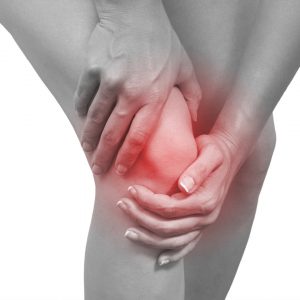Advancements in Joint Replacement Surgery & Techniques to Treat Arthritis

Arthritis is a condition that affects millions of people around the world. This chronic condition can lead to deteriorated joint health and limited mobility, causing pain, discomfort, and diminished quality of life.
Thankfully, in recent years, advancements in technology have helped improve the effectiveness of treatments for arthritis patients, including joint replacement surgery. Dr. Patrick Leung, a fellowship-trained reconstructive surgeon and joint replacement specialist at Orlin & Cohen, explains how arthritis impacts joint health, options for treatment, and the latest advancements in joint replacement surgery for patients with arthritis.
Understanding arthritis and its impact on joint health
Arthritis is a common condition that occurs when there is inflammation in the joints, which can cause pain, tenderness, and stiffness. When left untreated, arthritis can harm joint health and surrounding tissues.
The inflammation from arthritis damages the cartilage that cushions the joint and can cause decreased mobility—making it difficult to perform daily activities. Moreover, chronic inflammation can lead to the erosion of bone and joint tissues, increasing the risk of fractures and other conditions.
Orthopedic arthritis treatment
There are many options to treat arthritis. Physical therapy and exercise can help manage symptoms, alleviate pain, and improve mobility. Lifestyle changes, such as weight loss and a healthy diet, can play a key role in reducing inflammation and improving joint health. Anti-inflammatory medications and pain management techniques can also offer relief from pain.
In some severe cases, joint replacement surgery may be an option. Joint replacement surgery is recommended when nonsurgical options have failed to provide sufficient relief, and the pain and stiffness of joint damage impact a person’s quality of life.
The latest advancements in joint replacement surgery
Today’s digital world is revolutionizing joint replacement surgery with specific attention to how procedures are performed.
In the past, with more traditional joint replacements, mechanical jigs, and anatomic landmarks would guide surgeons throughout the procedure to determine the position of the implant. But now, with newer robotic technology, advanced imaging provides unparalleled accuracy in implant placement—ensuring the best possible outcomes.
What is a robotic joint replacement, and what are the benefits?
Robotic joint replacement is an advanced surgical procedure that utilizes computer-assisted technology to help surgeons perform surgeries with greater precision and accuracy.
During the procedure, a robotic arm assists the surgeon in positioning and placing implants with sub-millimeter precision. This minimally invasive technique allows the surgeon to make smaller incisions, and 3D modeling offers greater accuracy, allowing surgeons to better select implant sizes and proper alignment.
These robot-assisted procedures can minimize complications, reduce scarring, and speed up the recovery time for patients. It can also result in more natural joint function and improved implant longevity.
Am I a candidate for robotic joint replacement?
Nearly all candidates for joint replacement are candidates for robotic-assisted procedures. A joint replacement specialist will review your specific condition to determine the best course of treatment.
Candidates for robotic joint replacement include patients requiring a total or partial hip, knee, or shoulder replacement with significant pain or limited joint function.
What can I expect before my robotic joint replacement procedure?
Before your surgery, your surgeon will help you coordinate an MRI or CAT scan of the impacted joint. This advanced imaging will help your surgeon assess your condition and plan your procedure.
At Orlin & Cohen, our in-house diagnostic imaging features the latest technology, so scans are completed quickly with greater accuracy and patient comfort. We use a range of equipment and technology, and for most scans, patients can keep most of their bodies outside of the machines we use, which can be helpful for those who may be claustrophobic. Learn more about the benefits of MRIs at Orlin & Cohen.
How have partial knee replacements changed?
Partial knee replacements, while not new, have undergone a renaissance due to fusion with technology. In patients with arthritis that only have damage to one of the three compartments of the knee, a partial knee replacement is a minimally invasive procedure that preserves the ligaments and allows for a more natural range of motion. Using robotics for partial knee replacement has allowed these implants to be placed more precisely, improving patient recovery times and outcomes.
How have orthopedic implants changed?
In traditional joint replacement surgery, the implant is bonded to the bone using bone cement, which helps support the implant and is similar to using grout to hold tile. This technique has been used for decades and is very reliable, but repetitive motion can weaken the bond over time— loosening the implant and causing pain.
With recent advancements, newer implants are designed with 3D-printed surfaces. These intricately textured surfaces allow the body’s bone cells to attach to the implant like glue. This creates a strong, long-lasting biological bond that responds better to the stress from repetitive motion and minimizes the risk of loosening over time.
At Orlin & Cohen Orthopedic Group, our team of top-ranked orthopedic doctors includes fellowship-trained joint replacement specialists with the experience and expertise to help you manage and alleviate arthritic joint pain. Your specialist works closely with our in-house diagnostic team to carefully evaluate your condition and develop a customized treatment plan, which may include physical therapy, pain management, or joint replacement.
Wondering if joint replacement surgery can alleviate your chronic pain? We’ve got specialists for that—and same-day appointments. Request yours now.



